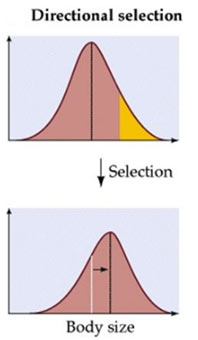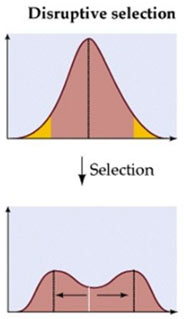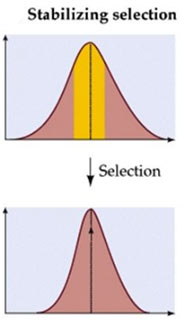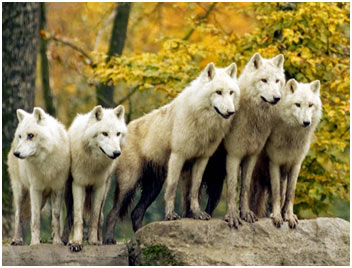Introduction
The theory of natural selection is very important in modern biology. Some phenotypes are more successful and leave more offspring than the other phenotypes. This is what we called natural selection.
The tendency for natural selection to occur and upset Hardy Weinberg equilibrium is known as selection pressure. Although natural selection is a simple principle it is diverse in operation. Many populations have a range of phenotypes for certain traits or characters.
This range is usually characterized by a bell-shaped curve. It shows the phenotypic extremes are less common than the intermediate ones. There are three modes in which natural selection can affect the range of phenotypes.
Directional Selection
In this type of selection, Individuals at one phenotypic extreme are at a disadvantage as compared to all the other individuals in the population. This is called directional selection.
In response to this selection, the deleterious genes decrease in frequency. But all other genes increase in frequency. When a mutation gives rise to new genes, directional selection takes place.
- It also occurs when the environment changes and it selects individuals from the existing phenotype.

Example of Directional Selection
The classic example of directional selection is industrial melanism. During the industrial revolution, it occurred in England. These environmental changes affected selection against one phenotype of the peppered moth, Biston betularia. It has two forms; grey and black.
- In areas of England, 95 % population was black and 5 % were grey.
Before industrial revolution
The trees had lichen-covered bark before the revolution. It has grey in color. The gray moths were bent with the gray bark of trees. Therefore, they cannot be spotted by the birds. But the black moth was easily visible in the lighter background. Therefore, easily spotted by birds.
Early industrial revolution
The factories used soft coal which released soot and other pollutants into the air. Soot covered the tree trunks and killed the lichens. The bark became black. Now birds could easily pick out gray moths against the black background of tree trunks.
But there was an advantage for black ones. They were camouflaged.
Disruptive Selection
The natural selection in which individuals of the most common phenotypes are at disadvantage is known as disruptive selection. And it produces distinct sub-populations.

Example of disruptive selection
A population of snails has a range of shell colors between white and dark brown. They live in a marine tidepool habitat with two background colors.
- Sand: The sand is made up of broken shells of mollusks so it is white.
- Rock: The habitat of snails made up of rock is brown.
Predators of snails are shorebirds. White snails are not actively selected on a white background. Thus, shorebirds do not prey on them. Similarly, brown snails on rocks are not spotted by birds.
So brown snails are also not captured by birds. But the birds, prey on intermediate phenotypes on both sand and rock substrates. Thus, disruptive selection produces two subpopulations, one white and one brown.
Stabilizing Selection
The type of selection which favors the intermediate against extremes is called stabilizing selection.
Sometimes, both phenotypic extremes are deleterious. Therefore, the third form of natural selection narrows the phenotypic range. New variations are raised during long periods of environmental constancy.
Thus, new genes combinations are formed. These combinations produce more fit phenotypes than the previous genes. These previous genes have allowed a population to survive for thousands of years.

Example of Stabilizing selection
A good example of stabilizing selection is the horseshoe crab – Limulus. It lives along the coast of the United States. Its fossils are compared with living forms. It indicates that little changes occur over 200 million years.
Apparently, the combination of characteristics present in this group of animals is adaptive for horseshoe crabs’ environment.

